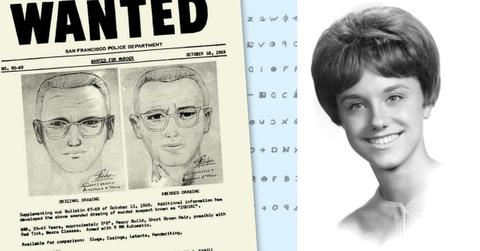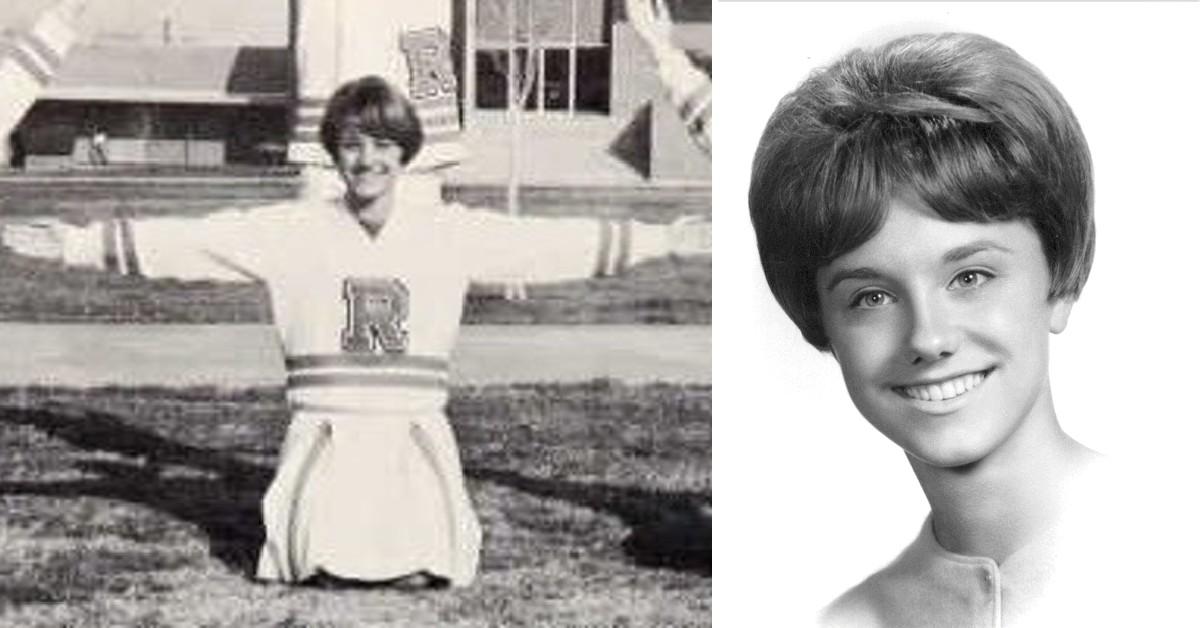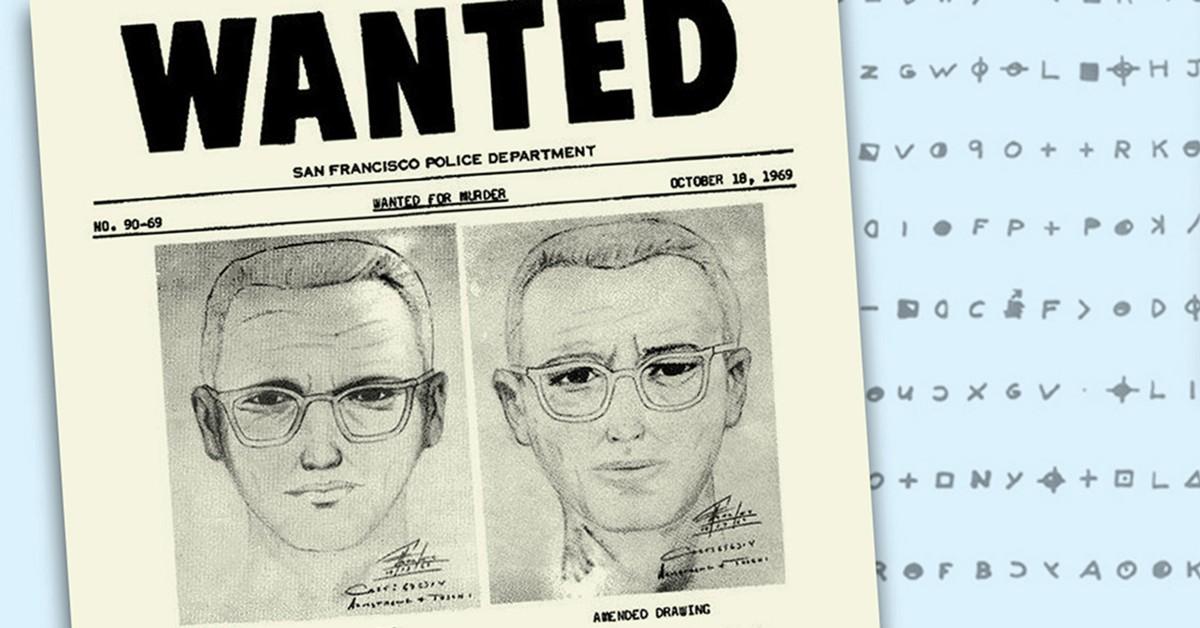Savage Attack & Disturbing Letters: Was the Death of Cheri Jo Bates the Zodiac Killer's First Murder?

May 24 2024, Published 9:01 a.m. ET
The 1960s were a time of violence. Not only did the United States see itself at war internationally, but political violence filled the streets, and prominent assassinations of men like John F. Kennedy and his brother Robert filled the airwaves.
So too, in the world of crime, the decade was a dark one, with the Manson Family bringing terror to California, followed swiftly by The Zodiac Killer. It was almost as if darkness had descended without warning on a state as a reaction to The Beach Boys' relaxed surfer atmosphere.
However, everything must have a beginning, and the killing of Cheri Jo Bates in 1966 may indeed be the start of one of America's most famous series of murders.
Bates was described by all who knew her as sweet, outgoing, and a classic all-American girl of the 1960s. She was born in Nebraska in 1948, and while her family was modest, she had become an honor student and cheerleader, being well known at Romona High School. She relocated to Riverside, California, in 1957 and seemed to love life in the sunshine state, having aspirations to travel and become a flight attendant.
Upon graduation, she enrolled at Riverside City College. She got a job at the Riverside National Bank to bring some extra money into the house she shared with her father since her parents divorced in 1965. Her father, Joseph, was a machinist at the Naval Ordnance Laboratory in nearby Corona, with her brother serving in the Navy itself to add another link.
Bates also had a boyfriend at the time, Dennis Highland. Highland had attended Riverside City College himself and then transferred to San Francisco State College to play football. Friends said they were deeply in love.
On Oct. 30, 1966. The Monkees and Supremes dominated the airwaves while "The Sound of Music" and "Doctor Zhivago" played in cinemas. Lyndon Baines Johnson was President, the Vietnam war raged, and the following day the NFL would award its 16th franchise to New Orleans to create the Saints.
Bates and her father attended mass at St. Catherine of Alexandria Catholic Church before sharing breakfast. Later that day, Bates decided to visit the college library to work on a research paper, twice calling her friend Stephanie to ask whether she would like to come. Bates called at 3 p.m. and 3:45 p.m. After being turned down, Bates left her house sometime between 4:30 p.m. and 5 p.m., leaving her father a note to say where she'd gone.
Driving her Volkswagon Beetle, Bates arrived around 6:10 p.m., and eyewitnesses described a second car seemingly following close behind, a bronze-colored 1965 or 1966 Oldsmobile. She stayed pretty late at the library, all the way until closing time, when she exited and headed back toward her vehicle. It was the last time she was ever seen alive.
Subsequent eyewitness reports say that a man was seen lurking in the shadows across the street. He was described as around 20 years old, roughly 5-feet-11-inches in height and noted to have been staring in the direction of Bates' Beetle.
When his daughter didn't return home, Joseph Bates filed a missing person report at 5:43 a.m., having first phoned Stephanie to check that his daughter wasn't staying overnight. Around 6:28 a.m., Bates's body was found on the college campus by Cleophus Martin, a groundskeeper. She'd been repeatedly stabbed.

However, to say Bates was stabbed might be something of an understatement. The body was found face down on a gravel path between two empty houses on Terracina Drive not far from the library parking lot. She was covered in the blood through being repeatedly stabbed in the chest. There were deep slash wounds to her face and neck, three gouges severing her jugular and larynx to the point of near decapitation. There were stab or slash wounds to hands and arms, and significant bruising to the head showed she'd been kicked. Some of the injuries were inflicted while she'd been on the ground.
It was a savage and frenzied attack.
The body was still dressed in a long-sleeve yellow print blouse and red capri pants, with her straw bag laying nearby, seemingly immediately ruling out a sexual motive or robbery.
In terms of actual evidence at the scene, investigators found significant amounts of skin and hair under Bates' fingernails which, along with deep furrows in the ground, showed she'd put up a big fight. The killer would have received significant wounds. Also found at the scene was a paint-splattered Timex watch with a footprint from shoes produced at Leavenworth prison and sold only in military outlets. The shoe was between a size eight and 10.
A picture begins to form of the killer. Police believed that he first disabled Bates' car, meaning he would have had to have watched her entering the building or been known to her personally; otherwise, he cannot have known which vehicle was hers. After lying in wait for her to exit the library, the killer likely surprised her when the car wouldn't start, maybe offering assistance. The keys were in the ignition, with the windows down.
Once Bates was away from the vehicle, the killer attacked her in the poorly lit Terracina Drive, shielded from view by shrubbery. The location may have been pre-chosen, and there may have been the possibility of a planned sexual assault before Bates fought back, angering her assailant.
THE INVESTIGATION
There was nothing in Bates' personal background to suggest another motive. Police began interviews, speaking to over 75 students and library staff before moving on the military personal from the nearby March Air Force Base. Highland had an alibi for the killing and was quickly eliminated from inquiries.
While the shoes that made the footprint were sold in military stores, there was no other evidence the killer had been military. However, the paint-splattered watch, which may have been his, may have indicated they worked with the material somehow, such as a decorator, artist, or in vehicle spraying.
Bates was buried on Nov. 4, 1966, at Crestlawn Memorial Park in Riverside. Speaking with the Press-Enquirer Cheri Jo's brother Michael said, "I think about her and what could've been. You have to remember that, or at least I always think about: These people that do this kind of stuff and just continue their lives, they actually have a life, where, even if they got caught at this point… certainly the penalty won't fit the crime."
Nine days later, Det. David Bonine staged a reenactment of the killing, utilizing 65 people who had been present at the library on the evening in question. All those taking part sat or stood where they had done at the time of the murder and even parked their cars in the exact same place and wore the same clothes in an attempt to jog memories.
There were new leads, including the presence of a tan-gray Studebaker near campus around the time of the killing, but nothing panned out.
However, later that month, the first of the letters arrived.
THE LETTERS
The letter was addressed to both the offices of The Press-Enterprise and Riverside police headquarters. It detailed the likely scenario of the killing, explaining how he had disabled the car and watched her try and start it several times.
Offering assistance, the letter writer claimed to tell the young woman his own car was just down the street and lured her into Terracina Drive, where he told her it was "time for you to die." He then held a knife to her throat and then beat and kicked her before the stabbing started.
- Has the 'Zodiac Killer' just been identified? Group says they have a strong suspect as the infamous killer.
- Zodiac Killer: Elusive Fiend Taunted Cops After Harvesting ‘Slaves for His Afterlife’ (FPD CASE VAULT)
- The Alphabet Murders: Did a Killer Prey on 3 Girls in New York Because of How They Spelled Their Names?
The writer acknowledged he knew Bates and gave a motive, saying, "Only one thing was on my mind: Making her pay for the brush-offs that she had given me during the years prior."
Police initially believed the letter as it detailed things that hadn't been released to the public, such as how the car was disabled. A psychologist at Patton State Hospital claimed the writer held an "intense hatred against female figures" through personal inadequacy, mainly if they were attractive. Patton added the writer could kill again.
However, advances in DNA technology would prove that the letter writer and the killer were not the same people. DNA was retrieved from the envelope, and the material found under Bates' fingernails was retained. No link between the two individuals existed.
However, the second letter is harder to debunk and one that may write the murder of Bates into even bigger infamy. On May 1, 1967, Bates's father and the police received more letters, very different from the first. The letter followed an update on the case the day before in the Press-Enterprise and stated, "Bates had to die. There will be more." At the bottom was a scrawl that appeared to be a "2" or a "Z."
If the scrawl is a Z, then the specter of the Zodiac Killer raises its head. Infamous for writing such letters to police and journalists, the uncaught Zodiac Killer would become almost legendary in criminal circles for a series of killings between December 1968 and October 1969 in the California area. Should Bates' murder has been linked, she could have been his first killing.
It isn't just the letter; however, that has raised suspicions, with a concerning poem being found written on a desk that was discovered in storage. The desk had at the time of the killing been located in the library. The text of the poem appears to suggest a tale of bloody and murderous attacks on a woman.
"Cut, clean, if red, clean. Blood spurting, dripping, spilling. All over her new dress, oh well, it was red anyway. Life draining into an uncertain death; she won't die this time; someone'll find her. Just wait till next time. RH"
Despite the suspicious nature of the poem and Sherwood Morrill, California's top "questioned documents" examiner claiming the poem was the work of the Zodiac, most investigators don't believe it has anything to do with the murder of Bates. Instead, it appears to be a suicidal poem by a troubled woman, with the references to blood being about cutting her wrists. Looking at it in that context reveals what is meant by "she won't die this time, someone'll find her. Just wait till next time."
Strangely, in November of 1969, another student was murdered closely connected with a library. 22-year-old Betsy Aardsma was killed with a single stab wound to the heart inside the library at Penn State. Her killer was never caught, and at the time of the murder, she was wearing a red dress. Some have linked the killings of Bates and Aardsma through circumstantial evidence, primarily the location.
On March 13, 1971, the Zodiac Killer seemingly confirmed he had killed Bates in a letter to the Los Angeles Times. The Zodiac credited police with discovering his links to his "Riverside activity," adding, "they are only finding the easy ones; there is a hell of a lot more down there." Despite the claim, most believe that it is a red herring, and the Zodiac had nothing to do with the murder of Bates, even if he may have been behind one or more of the letters.
THE SUSPECTS
However, the links don't end there, with one of the prime suspects in the Bates case also being noted as in the frame for the Zodiac. Ross Sullivan was a library assistant at Riverside City College who went missing for several days after the murder of Bates. Anyone linked to the college would have been forced to lay low given the scratches and bruising they are likely to have suffered during the murder through Bates' strong defense.
Sullivan wore military boots like those found at the crime scene and resembled future sketches of the Zodiac. He even took cryptography courses at college, with the Zodiac famously sending coded messages to journalists and police. He was hospitalized several times for mental health issues, including schizophrenia, and is not considered a suspect by Riverside police, having an alibi verified. He died in 1977 of Pickwickian Syndrome.

Another suspect in the Zodiac killings was Richard Marshall, who also lived in Riverside at the time of the Bates murder, having moved to San Francisco by the time the Zodiac was active. Despite being said to have privately admitted the killings, Marshall is not considered a suspect by police who maintain the killing is unconnected to the Zodiac in any case.
In August 2021, Riverside police's cold case unit revealed that the writer of the letters claiming responsibility had finally been identified and confessed. The individual concerned had already contacted police in 2016 wishing to come clean, having had a crisis of conscience. The writer was unconnected with the murder and had carried out the hoax to seek attention, being a troubled teenager at the time.
There remains one suspect in the case who returned to California around 10 years ago after a period living abroad. Police quickly obtained a warrant for his DNA which came back negative. However, investigators remain confident he is the killer and concerned that their DNA isn't actually from the man who killed Bates. They believe that acquaintances of the suspect likely had information that they haven't shared.
"[Previous detectives] zeroed in on one suspect that they did the direct comparison (DNA test) and it didn't match, but it's entirely possible it could still be him," Riverside police lead investigator Det. Jim Simons told The Press-Enquirer in 2013, adding that police maintain the killer was "an acquaintance of Bates or a scorned love interest."
The murder of Bates was brutal and savage, leaving an 18-year-old girl nearly decapitated essentially on a public street. She fought for her life with everything she had, and while it wasn't quite enough to save her, she undoubtedly inflicted wounds on her assailant that cannot have gone unnoticed. Somebody knew something, yet the case went cold.
It seems likely that Bates knew her killer with enough familiarity that she willingly exited her vehicle to walk off with him, and equally that whatever the killer had planned, he had plotted for some time. Whether his initial intention was sexual assault or always murder, we can't be sure, but Bates' undisturbed clothes suggest it may have always been his intention to kill. Such a killer would be highly likely to have struck again, which only leads credence to the idea that the Bates murder may indeed have been the first kill of the Zodiac.
Those with information on the Bates murder can contact investigators at this dedicated email address: cjb@riversideca.gov
Become a Front Page Detective
Sign up to receive breaking
Front Page Detectives
news and exclusive investigations.
